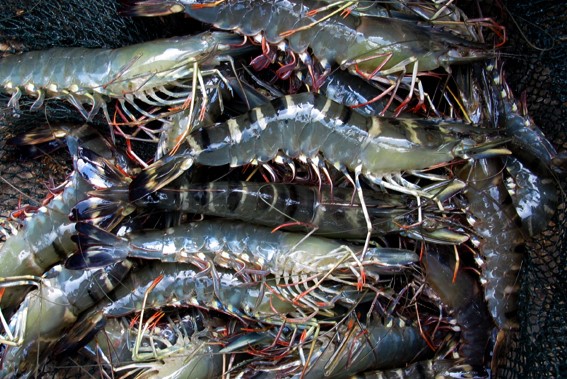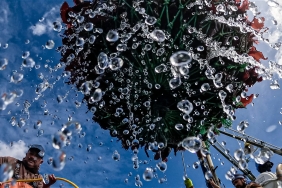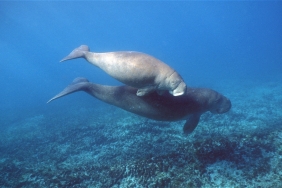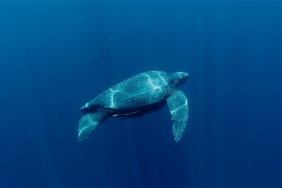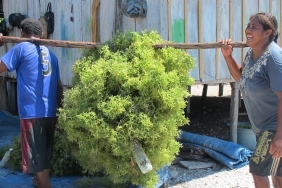GETTING TO KNOW GOOD VANNAMEI SHRIMP FARMING TECHNIQUES
By: Zulkarnain (Faslok AIP Udang Pinrang)
The move from tiger shrimp to vannamei shrimp is not an easy one. The move was not without a reason, namely due to the decline in the stock of tiger shrimp broodstock and fry, which is indicated by the increasing number of farmers who harvest early (small shrimp). Now the vannamei shrimp commodity is starting to be in demand by some farmers, despite the fact that the tiger shrimp commodity is still an idol. It can be seen from the increasing sales price of tiger shrimp.
Starting in 2011, vannamei shrimp or better known as white shrimp began to be known by farmers through radio and word of mouth. The cultivation process, which was only undertaken by farmers with capital, did not deter other farmers who were still loyal to tiger shrimp. However, as time passed, tiger shrimp farming experienced many problems. The early deaths of tiger shrimp and the type of feed that contains preservatives made farmers in Pinrang Regency try to start cultivating vannamei shrimp. Although the results were not quite satisfactory at the beginning of the experiment, at least there were benefits obtained by farmers.
Because there are still not many who know how to cultivate good vannamei shrimp. Capitalizing on their modified tiger shrimp farming methods, farmers in Tasiwali'e Village began cultivating Vannamei shrimp in 2015.
With the aim of providing knowledge and procedures for sustainable vannamei shrimp farming, in October 2017, WWF-Indonesia held a meeting with farmers in Tasiwali'e Village, Suppa District. By presenting a speaker who is a local intensive system shrimp farming technician, Muh. Hamzah, S.Pi, opened a discussion class on pond land preparation and feed management.
According to Muh Hamzah, 60% of the success of shrimp farming is determined by land preparation. "The main problem found in aquaculture is the presence of ammonia in the mud, the main medium where bacteria such as vibrio nest," he explained. So, to overcome this can be done by drying the pond land, plowing and mud removal which can be done if possible. In addition, giving probiotics is an alternative to speed up the evaporation process. When draining the land, it is necessary to give burnt lime at the bottom of the pond and on the bunds, so that when the removal of mud will fall back when it rains.
Furthermore, it is necessary to sterilize in preparation for irrigation to inhibit the growth of moss, eradicate wild fish and shellfish. "Fertilizer is not needed in vannamei shrimp farming. Although it can trigger plankton growth, it can accelerate the process of water degradation. It is enough to give fermented bran only if using intensive system cultivation." Muh Hamzah explained in his presentation.
Looking at the pattern of feeding how to determine the amount based on the behavior of shrimp in the pond needs to be considered because the appetite of shrimp can change every time. Muh Hamzah also explained that shrimp will be lazy to eat when molting (regular molting as the shrimp body grows), so the dose of feeding can be reduced to avoid waste and accumulation of residual feed that can increase ammonia.
DO or oxygen content in the water will decrease at night so feeding at night should be reduced to reduce activities that can reduce DO in the pond. If there is a device in the form of a pinwheel, it should be activated in the afternoon, because the beginning of the decline in DO begins to occur.
According to farmers, this feed management material is very helpful for farmers, because the experience in feeding is still lacking and dosing has not been calculated precisely, farmers can compare the way they use the feed with the material provided.
At the end of the meeting Muh Hamzah discussed the types of diseases in vannamei shrimp. In fact, farmers are better off preventing diseases that can attack shrimp than treating them with good land preparation, always maintaining pond water quality, and fulfilling the quality of shrimp nutrition.
This Vannamei class is planned to last for six meetings or adjust to the needs of vannamei group members. The hope is that with additional information and open discussions through this vannamei class, farmers can further improve their cultivation management, resulting in increased production and farmers can concentrate on improving the environment around the pond.

